Are you a Quiet Speculation member?
If not, now is a perfect time to join up! Our powerful tools, breaking-news analysis, and exclusive Discord channel will make sure you stay up to date and ahead of the curve.
Modern is on fire. I've come to expect this declaration every time there's a noticeable shift in the format. Sometimes it's justified. Sometimes it isn't. And sometimes its semi-literal. Burn appears to be dominating Modern at the moment. Red decks have been doing well since Oko, Thief of Crowns was banned, but it was Prowess leading the charge. This trend appears to have reversed, and a resurgent Burn is making up for lost time.
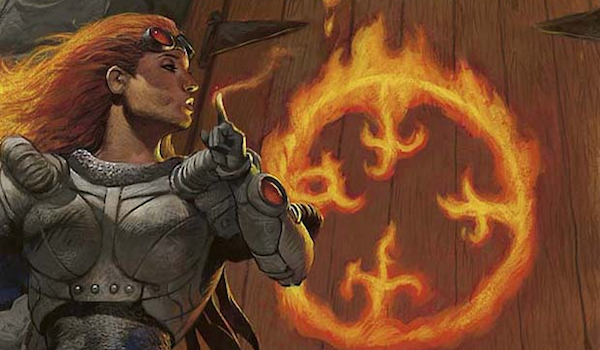
Of course, this may be nothing special. It's expected that Burn will be a top deck right after a significant shakeup. As always, it's a very straightforward deck and it doesn't take much metagame knowledge to do well. The deck thrives in the volatile chaos of a shake-up. A bigger advantage this time was that Burn was a ready home for Lurrus of the Dream-Den. Burn could adopt the companion without any changes, though it wasn't clear that Burn actually would. However, the ease of adopting the new card and the potential payoff of doing so successfully did lead to Lurrus being adopted.
The Starting Point
And it did so quickly. As soon as Ikoria became available online players were jamming it everywhere. The hype was real. When it came to Burn, I expected there to be no significant changes. At most, just a sideboard slot would be sacrificed to the Cat Nightmare because the standard maindeck already met its requirements. Why change anything else? Burn's premise is to be as linearly efficient as possible, and it was already running all the best burn. I thought there was nothing to be gained by shaking up the deck beyond the hard to define advantage of having a tutored 8th card "in hand." Imagine my surprise when the first available results looked like this:
Burn, Coert (League 5-0)
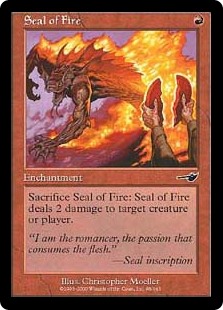 Coert and other Burn players immediately jumped to feeding Lurrus. Seal of Fire is not a very good Burn card. Typically, if Seal saw play, it was as Tarmogoyf/Traverse the Ulvenwald food or in Prowess decks. A one-time shock is not good enough for regular Burn, especially when Grim Lavamancer is an option. However, Lurrus has a way of making less efficient options more attractive. Seal is still well below par for a typical Burn spell, but with Lurrus in play, it suddenly becomes a source of guaranteed late-game Burn which will eventually overwhelm even the best counterspell wall.
Coert and other Burn players immediately jumped to feeding Lurrus. Seal of Fire is not a very good Burn card. Typically, if Seal saw play, it was as Tarmogoyf/Traverse the Ulvenwald food or in Prowess decks. A one-time shock is not good enough for regular Burn, especially when Grim Lavamancer is an option. However, Lurrus has a way of making less efficient options more attractive. Seal is still well below par for a typical Burn spell, but with Lurrus in play, it suddenly becomes a source of guaranteed late-game Burn which will eventually overwhelm even the best counterspell wall.
Sacrifices have to be made when making changes to a deck, as nothing is without opportunity cost. In this case, that cost was Skewer the Critics and Rift Bolt. Coert apparently came to the conclusion that instant is greater than sorcery so he kept all his instants. He then concluded that repeatable damage is better than single shots. Thus, he kept Grim Lavamancer maindeck to compliment Lurrus and Seal. While not universal, this line of thinking was largely present in the early results.
An Evolution
That began to change after the initial weekend. I'm not entirely surprised that Seal fell from favor, since it does cost mana to reuse. The enchantment became something of a tempo drag, especially in comparison to previous builds. Instead, Burn jumped on the freebie bandwagon and adopted Mishra's Bauble, as had most other Lurrus decks.
Burn, Gigy (League 5-0)
Given the trends, I thought this was the logical way to go with Lurrus Burn. Players like drawing cards. Players like free stuff. There's a perception that companions are now required for competitive decks. Combine all of that and Lurrus rebuying Bauble is everything every player has ever wanted. It just made sense.
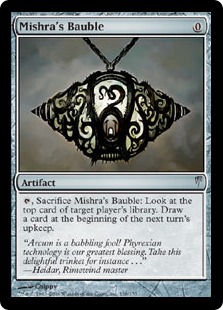 At least, in a sense. Again, my problem with Lurrus in Burn was always that really making it work would involve taking something away from the central strategy. And I was not alone thinking that. In his primer on Lurrus Burn, Martin Juza noted that Bauble doesn't fit with the central strategy of Burn. It's not a highly efficient source of damage, and by playing it, you're not playing the burn spell that may finish off the opponent. However, in the context of Lurrus, that inefficiency is worthwhile as a source of long-run gas. Rather than being a burn spell itself, the argument went that replayed Baubles represented an investment in multiple burn spells over time.
At least, in a sense. Again, my problem with Lurrus in Burn was always that really making it work would involve taking something away from the central strategy. And I was not alone thinking that. In his primer on Lurrus Burn, Martin Juza noted that Bauble doesn't fit with the central strategy of Burn. It's not a highly efficient source of damage, and by playing it, you're not playing the burn spell that may finish off the opponent. However, in the context of Lurrus, that inefficiency is worthwhile as a source of long-run gas. Rather than being a burn spell itself, the argument went that replayed Baubles represented an investment in multiple burn spells over time.
This argument appeared to be the accepted consensus because for the second week of Ikoria's legality, Bauble Burn was the most common variant. Seal just wasn't good enough compared to Bauble, and it looked like Bauble Burn would be the new default. I personally hoped that this decklist would become the standard version, as it wasn't packing maindeck Searing Blaze, and I exclusively play Humans online. There also isn't room for Searing Blood in the sideboard. This gives Humans a big edge Game 1, and I was doing pretty well in the Leagues.
The End Point...
Then the weekend of April 22 happened. I don't know why, but for some reason that weekend saw a surge of weird decks. Yorion, Sky Nomad appeared to be getting popular, which explained some of it, but even amongst the relatively established decks, there seemed to be a push towards the speculative and janky. I don't know, maybe a change in the winds brought all the brewers out of the woodwork. In any case, Burn in particular saw considerable change over that weekend, starting with this list:
Burn, Sunofnothing (3-2 Modern Prelim 4/22)
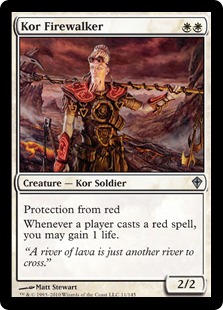 Sunofnothing really leaned into Lurrus with this deck. Cutting Eidolon of the Great Revel makes Burn pretty cold to combo, but doing so here was either a clever metagame call or simply necessary. The plan here is to maximize the recursive power of Lurrus, and that means a lot of extra damage off Eidolon which Sunofnothing decided they couldn't afford. Lurrus is guaranteed on turn three, but having something to replay is not. This deck represented a concerted effort to maximize Lurrus, and it seemed like an extreme push to do so. It even has Pyrite Spellbomb sideboard to beat the omnipresent Kor Firewalker.
Sunofnothing really leaned into Lurrus with this deck. Cutting Eidolon of the Great Revel makes Burn pretty cold to combo, but doing so here was either a clever metagame call or simply necessary. The plan here is to maximize the recursive power of Lurrus, and that means a lot of extra damage off Eidolon which Sunofnothing decided they couldn't afford. Lurrus is guaranteed on turn three, but having something to replay is not. This deck represented a concerted effort to maximize Lurrus, and it seemed like an extreme push to do so. It even has Pyrite Spellbomb sideboard to beat the omnipresent Kor Firewalker.
And then I jumped onto MTGO myself. All that weekend, I was seeing bizarre hybrids of Burn and Prowess. And weirder, including a Mardu Pyromancer/Elementals/Burn mashup that I imagine was a pet deck taken to extremes by Lurrus. The relatively normal versions were using the Prowess creature base and Burn's spells. This normally doesn't work because Burn can't just dump its hand or play cantrips to fuel big prowess turns. Recycled Baubles made it plausible, and I certainly lost to them.
...Or Not?
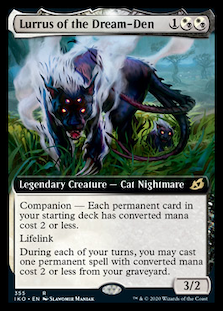 I had planned for that to be the exclamation point on this whole discussion, and then to move on to discussing the merits of deck hybridization as the metagame repositioned. The hybrid Prowess/Burn decks didn't fully displace Bauble Burn as far as I could tell, but it was maintaining position in the metagame and sneaking into the data. It looked like this might be the new way of Burn. Given the narrative on companions in general and Lurrus in particular, it was plausible, and the data appeared to support the observations. After all, it was similar to what had already happened with Jund. I'm drawing attention to this thought process because as I began writing this article, the data started contradicting this conclusion.
I had planned for that to be the exclamation point on this whole discussion, and then to move on to discussing the merits of deck hybridization as the metagame repositioned. The hybrid Prowess/Burn decks didn't fully displace Bauble Burn as far as I could tell, but it was maintaining position in the metagame and sneaking into the data. It looked like this might be the new way of Burn. Given the narrative on companions in general and Lurrus in particular, it was plausible, and the data appeared to support the observations. After all, it was similar to what had already happened with Jund. I'm drawing attention to this thought process because as I began writing this article, the data started contradicting this conclusion.
While collecting the weekend's data for the upcoming metagame article, I discovered that the previously observed Burn trend had reversed. There were still decks that fully embraced Mishra's Bauble, but they made up a minority of last weekend's results. Most had shifted back toward pre-Ikoria configurations. Some, like my example list, still had something for Lurrus to do, but many were just running Lurrus for the sake of running Lurrus.
Burn, Eresopacaso (4-1 Modern Prelim. 5/1)
This deck could have plausibly existed before Ikoria. And it may have, as the singleton Seal is the only deviation from typical Burn. Seal isn't even too out of place as a metagame call or utility spell. I've lost to maindeck Shrine of Burning Rage out of Burn before. And Eresopacaso's list is indicative of the overall data from last weekend. For some reason, players generally abandoned Bauble and refused to make concessions for Lurrus. Lurrus was not actually abandoned, as every Burn deck I've seen continues to run the companion, but it's becoming an incidental thing.
The main thing to note is that this is where I expected Burn to start with Lurrus; it makes more sense for a card to see incidental play than be fully integrated and built around. Last weekend showcased the exact opposite effect. This is a much more significant development than even the pushed decks from the weekend before and requires closer investigation.
What Does it Mean?
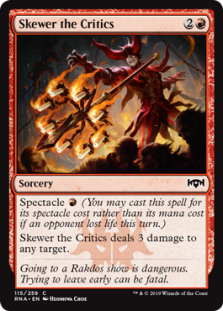 The latest data as I'm finishing this article generally backs up the weekend results. Bauble Burn is still around, but has lost its presumptive position. The incidental-Lurrus decks are putting up more and generally better results than the older versions. This suggests that Burn is actually moving away from Lurrus as a strategy, though not as a card to play.
The latest data as I'm finishing this article generally backs up the weekend results. Bauble Burn is still around, but has lost its presumptive position. The incidental-Lurrus decks are putting up more and generally better results than the older versions. This suggests that Burn is actually moving away from Lurrus as a strategy, though not as a card to play.
I should note that it is possible that this is simply a case of outliers shining through. The metagame is a vast, churning sea of player and decks. Anything can get chucked up to the surface for me to observe. However, when similar decks keep getting churned up over time then it becomes indicative of reality. The data is getting close to that threshold, but is not there yet. So assuming that this latest development is not an outlier, the question is what does it mean? I see two scenarios.
1) A Reevaluation
Last week, I argued that deck that the only reason that Lurrus Jund was doing well was Lurrus itself. In order to play Lurrus as a companion, Jund had to make itself worse compared to its 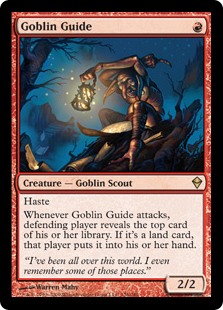 normal configuration. No Jund deck would give up Liliana of the Veil and Bloodbraid Elf for Mishra's Bauble under normal circumstances. However, Lurrus' power is high enough that the efficiency and power loss was made up in aggregate by the extra card advantage. However, this didn't change the fact that the deck itself was bad, and made me question its longevity.
normal configuration. No Jund deck would give up Liliana of the Veil and Bloodbraid Elf for Mishra's Bauble under normal circumstances. However, Lurrus' power is high enough that the efficiency and power loss was made up in aggregate by the extra card advantage. However, this didn't change the fact that the deck itself was bad, and made me question its longevity.
This is what is happening with Burn. The Bauble Burn and hybrid Burn/Prowess decks are worse in a measurable way than normal Burn. The inefficiency relative to baseline has started catching up with pilots, particularly as other players adapt to them. Thus there's no longer time for, nor any advantage to, messing around with Baubles. They're streamlining themselves to regain Burn's normal competitive edge.
2) An Adaptation
Alternatively, this is a response to metagame changes external to Lurrus. Bant Yorion decks are getting more popular, and that presents a challenge for Bauble Burn; there's no winning a long game against a deck full of cantrips and lifegain that has a guaranteed way to flicker all of them. The advantage of recurring Bauble is meaningless against Bant's tsunami of card advantage. Instead, the advantage is shifting towards speed and Skullcrack. Lurrus packages are being cut for space as a result, with Lurrus itself being preserved as incidental value against black midrange decks.
Trust the Data
I don't know which scenario is correct, but the data will tell. Next week, I'll have a comprehensive review of the past month, which should help further shape our understandings what's actually going on with the companions.




If/when it is demonstrably proven that in eternal formats like Modern running a companion (whether integral to the deck’s design or not–I’m looking at something like Jegantha in humans or Niv-to-light) provides a statistical advantage, then I don’t see how a rule change could not be a mandate. An edge, however small, will warp competitive play around it. Right?
What I can’t wrap my head around is that Wizards didn’t seem to consider this while developing companions. While it seems like they designed these companion cards for standard and limited only–which I think is generally the right thing to do–here it came with a significant side effect: a fundamental change to how the game is played. Sure, it’s an optional change, but if a player doesn’t want to be at a disadvantage why wouldn’t he/she run one? I play Merfolk…I can run Lurrus without giving up much at all. Why would I not? (Which really irks me because Brazen Borrower was not cheap–particularly online.)
Which brings to mind an additional unintended consequence–the creation of a gulf within archetypes themselves. Companions essentially just created two versions of MANY decks, one that runs a companion and is more competitive and one that doesn’t and is less competitive. I think this rings true for A LOT of decks. Is this an issue? I don’t really know, but it seems like one. Would a rule change like the Davis suggestion fix it? I think it would help, but it wouldn’t eliminate the underlying problem which remains no matter what is done. Companions change the way constructed Magic is played. And this is what I believe most people are upset about.
I’ll be exploring the fundamental question of the companions next week. The data’s still coming in, but the picture I have right now is somewhat ambiguous.
I’m actually not convinced that the companions are well designed for Standard and Limited. Standard have Keruga and Yorion in the same proportions that Modern has Lurrus. And in draft whoever builds around the companion generally wins. I personally think that some higher up looked at Commander, didn’t get why it’s so popular, and decided that everything must do the popular thing regardless of consequence.
Changing the rules or simply disallowing using the companion mechanic would be unprecedented. Swaths of cards have been banned before, but that’s because they referenced ante. I don’t know that Wizards would be willing to do something like that, even if I do think its the right call.